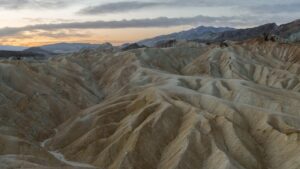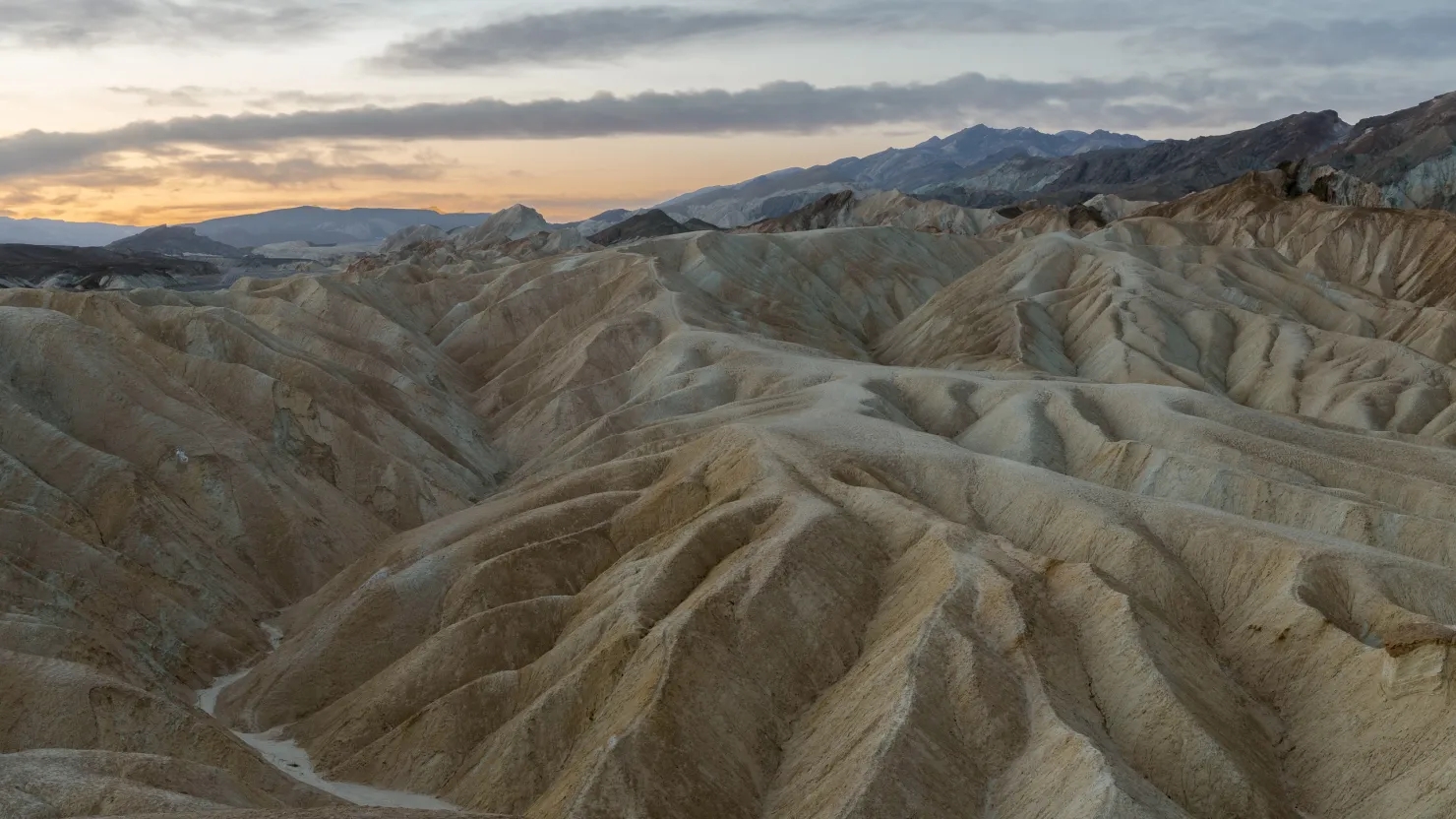
Death Valley becomes especially photogenic during April. This brief period between extreme cold and extreme heat features desert flowers in full bloom; weather ranges between the low 50s to low 100s Fahrenheit – during this visit temperatures didn’t drop below 56deg or rise higher than 86deg! Wind was present, though only on one of three-day trip’s three-day journey.
Sunrise A landscape photographer’s day begins early. Quality lighting usually begins around sunrise and lasts a few hours into the afternoon – though I tend to find that quality light fading more quickly in the morning, possibly because my mind has yet to wake up fully!
My day began in breathtaking fashion as dawn greeted Zabriskie Point — an idyllic viewpoint with panoramic vistas across this vast valley.
Two cameras with dual purposes
Before photographing, I imagined shooting the scene toward the south. Dominant shadows will cast across landscape features when your perspective is at 90 degrees from light source.
I brought two cameras, one designed for wide angles and one set up for tighter shots. My Canon EOS R was set up for wide angles with its Canon RF 24-105mm f/4L IS USM Lens; this lens proved ideal as the Zabriskie Point would have become too overwhelming if my EF 17-40mm would have been included as it would have filled most of the frame.
Another reason I brought two cameras was due to anticipated wind. I didn’t want any sensor dust accumulated while switching lenses in the field.
Telephoto for tight compositions In addition, I also brought along my Canon EOS RP with an adapted Canon EF 70-200mm f/4L USM lens adapted specifically for this occasion and used this combination in tighter compositions – working quite nicely as both cameras were ready and waiting for Plan A photographs with 26MP EOS R standing by as back up! This allowed for timely photos during Plan A shots as well as being readily available when opportunities presented themselves during spontaneous moments.
Landscape photography doesn’t necessarily necessitate wide angles. A telephoto can add dimension and bring subjects closer, without necessarily using wide lenses. When photographing Zabriskie Point I decided to exclude the sky altogether; here a quality telephoto lens really comes into its own.




Hi, this is a comment.
To get started with moderating, editing, and deleting comments, please visit the Comments screen in the dashboard.
Commenter avatars come from Gravatar.